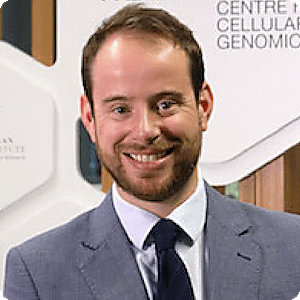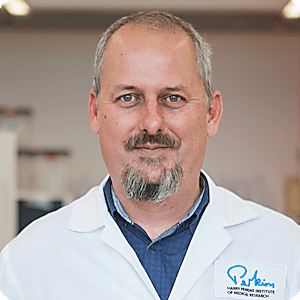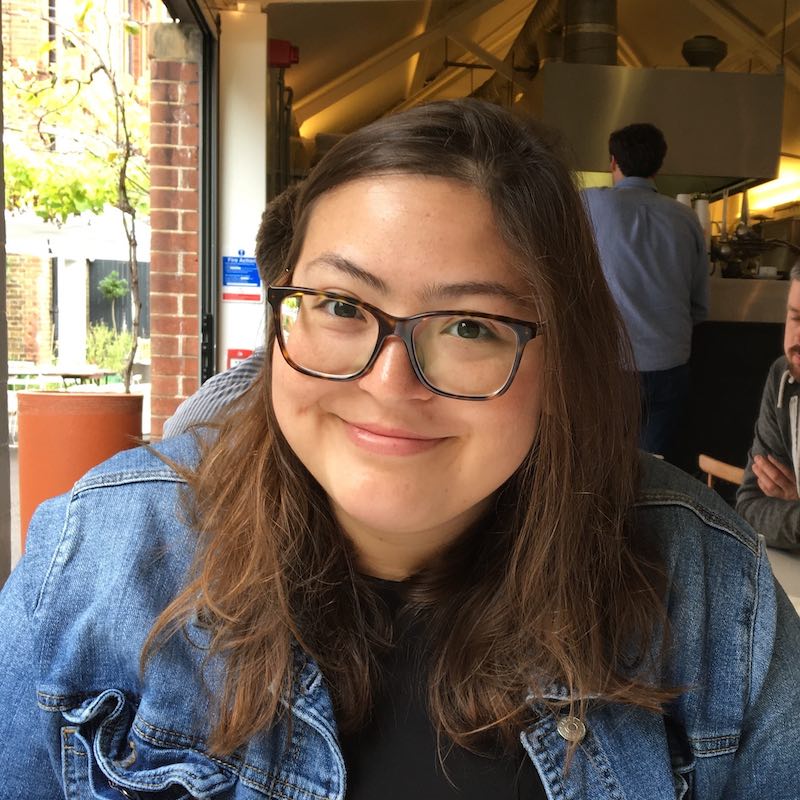CTRN Spotlight: Insights on the future of spatial biology from Australia
Understanding cellular relationships and interactions within the tissue landscape is critical to deciphering disease mechanisms, developing therapeutic interventions, and evaluating response to treatment. Recognizing the important connection between spatial biology and clinical advances, the Clinical Translational Research Network (CTRN) has a single scientific goal—to fuel breakthroughs in clinical translational research with spatial gene expression.
We know that each of our CTRN members is working hard to bridge the gap between the bench and the bedside, an essential step forward in the advancement of human health. But in developing the CTRN, we were also concerned with another chasm that can, at times, feel impassable—the distance between researchers around the world. Communication and collaboration are key to scientific discovery, which is a big part of why we created the CTRN in the first place. Now, with over 80 members from over 60 institutions, the CTRN is connecting translational researchers globally, providing a forum where leaders in the field can come together to share their ideas and discoveries.
We’re especially grateful for these connections right now—though travel isn’t at the top of our to-do list at the moment, we’ll always jump at the chance to check in with other parts of the globe via the CTRN. Recently, we talked to our Australia-based members about Visium Spatial Gene Expression for FFPE and the future of spatial biology. Find out what they had to say below.

Professor Joseph Powell, with expertise in statistical genetics, single cell sequencing, machine learning, and medical genomics, envisions a future where single cell profiling within the spatial context translates directly to clinical treatment strategy.
“The potential to genomically profile every cell in an in situ context, and the ability to then correlate this data with traditional staining and anatomical images are what makes me excited about spatial sequencing. I see an obvious path for the clinical translation of this technology, enabling us to make more accurate and personalized decisions for improved disease management.”
For now, though, Visium for FFPE, which allows whole transcriptome spatial profiling in formalin-fixed, paraffin-embedded tissue blocks, will provide plenty for Professor Powell to work with. He tells us, “Visium FFPE will support our testing of cell–cell interaction hypotheses, and enable us to discover cell-specific behaviour of distinct cancer clonotypes. This will allow us to understand the proliferative capacity and metastatic potential of the heterogeneous cell populations within each tumor.”

Dr. Quan Nguyen’s research combines cutting-edge technologies with computational analyses to study cancer and neuronal diseases in patient samples and mouse models. With the goal of finding new classes of spatial biomarkers that are not yet detectable by traditional methods, Dr. Nguyen takes a detailed approach. He studies his samples one cell at a time, across all cells and through the spatiotemporal axes. In the future, he hopes spatial technologies will provide an even deeper look at cellular interactions and behaviors.
“Spatial omics produces novel data that is missing from most other genomics assays that require tissue dissociation. Such data would allow me to understand cells in their native ecosystem, especially cell-to-cell communication, an essential process that determines how cells act and evolve synergistically within a tissue in response to environmental signals, such as drug treatment.”
He has bright hopes for Visium for FFPE as well. With the ability to profile biobanked and archival cancer samples—collected up to ten years ago—at the whole transcriptome level in an unbiased manner, Dr. Nguyen foresees new insights into cellular interactions. He says, “We will be able to discover new biomarkers used for cell-to-cell communication between cancer and immune cells.”

Professor Alistair Forrest’s interests lie principally in describing the biological components encoded in our genomes and how they work together in systems, particularly within cell-to-cell communications networks. Though he’s made remarkable progress with single cell profiling, he sees the potential of combining that information with spatial transcriptomics, and he’s eagerly awaiting a future where they work as one.
“We have worked with bulk expression profiling (microarrays and RNA-seq) for decades. Single cell profiling has dramatically transformed the resolution at which we can study cellular function, however dissociated cells lose the information of spatial context. Spatial transcriptomics technology will allow us to study cells in their native tissue context as a network of interacting cells that work together to elicit complex functions. I’m waiting for broad availability of single cell resolution spatial technology.”
When it comes to Visium for FFPE, Professor Forrest has big plans. Though FFPE processing can damage RNA, it is the most common method of tissue preservation, especially for archival or biobanked samples. Visium for FFPE allows researchers to overcome the challenges that FFPE preservation poses for transcriptomic analysis. For Dr. Forrest, this means the ability to profile previously inaccessible tissues, including rare and precious samples.
“The FFPE solution promises to allow us to study precious samples that were not previously accessible. This includes collections of rare cancer samples collected over extended years, valuable samples collected as part of clinical trials and facilitates histological prioritization of samples prior to committing to profiling.”

As a Lab Head of the Onco-Fetal Ecosystem Laboratory at the Harry Perkins Institute of Medical Research, Dr. Ankur Sharma’s research is focused on the similarities between the fetal and tumor microenvironments. He considers spatial transcriptomics the next step in advancing our understanding of the tissue ecosystem, providing even finer details about cell behavior. He says, “Single cell RNA-sequencing revolutionized biological research by providing granular details about tissue ecosystem, and spatial technologies have taken this a step further by allowing us to eavesdrop on the cellular chatter in their niche.”
As a “cancer biologist who is interested in understanding the tumor ecosystem and the arms race between malignant and immune cells,” Dr. Sharma feels Visium for FFPE is a perfect fit for his research aims.
“Location, location, location! We couldn’t have asked for a better technique. Visium for FFPE will allow us to study archival tissue and understand why some patients respond to therapy and others not and guide us in developing better drugs to empower the immune system in the fight against cancer.”
Get an inside look at Dr. Sharma’s research and hear from other leading scientists as they share their latest breakthroughs at our upcoming Spatial Biology Symposium.
Learn more about the CTRN program and stay up to date on future opportunities to join this growing community by visiting the program homepage.
